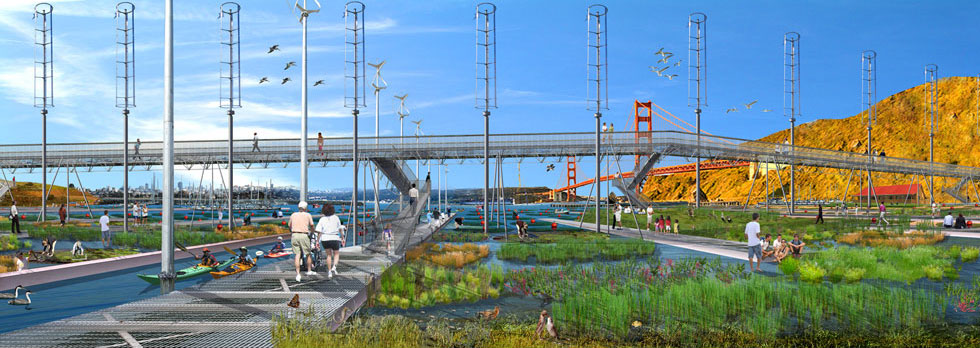
Designing for an Uncertain Future
Once a thriving estuary, the Horseshoe Cove site, located along the San Francisco Bay in Marin County, had become an unproductive, even desolate, parking lot cut off from the water by a mundane sea wall, a condition common to riparian sites in urban areas throughout the industrial world. It is now the historic site for a new, highly visible public infrastructure project that proposes to repair the San Francisco Bay ecosystem through specific native species farming and broad-based community involvement. By addressing the global challenge of rising tidal levels on a very local scale, Bay Remediation Site 1 (BRS 1) creates a place for education, recreation, and bio-production. The new self-regenerative, “soft” infrastructure will function as a maintained production system which seeds other deteriorated bayside sites, while at the same time reestablishing natural processes halted by years of environmental disruption.
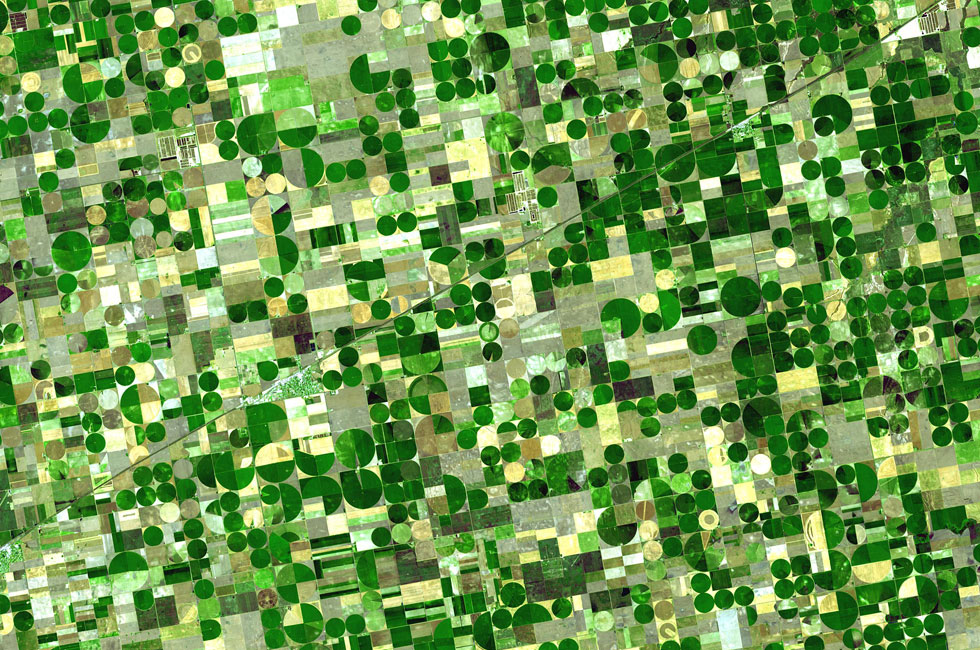
Nursing an Ecosystem Back to Health
Research into small-scale bio-remediation methods sparked the question of how such seemingly discrete and experimental practices could inform a larger landscape remediation strategy. Biological reestablishment combined with industrial practices are applied over the entire 6.3-acre site, to create a bio-remediation farm, or nursery, to address the regional problems of declining species diversity, water toxicity, and algal bloom common to all bay ecologies. INTERSTICE demolished the existing sea wall boundary, redistributing its material in order to establish a blurred tidal edge. A receptive littoral zone—the space near the shore where sunlight can reach the sediment and plant life beneath the water’s surface—replaces the former boundary of resistance. The transformed site is then reorganized and stewarded through the implementation of a combined eco- and agri-structure, which includes land forms built from reclaimed seawall debris, modular low-impact access catwalks, connecting distribution and generation networks for water, power, and bio-products, all concentrated into this wetland eco-zone. The large-scale plotted nursery is focused on replenishing native eelgrass (Zostera marina), which is central to the establishment of other vital plant and animal communities in wetland ecosystems.
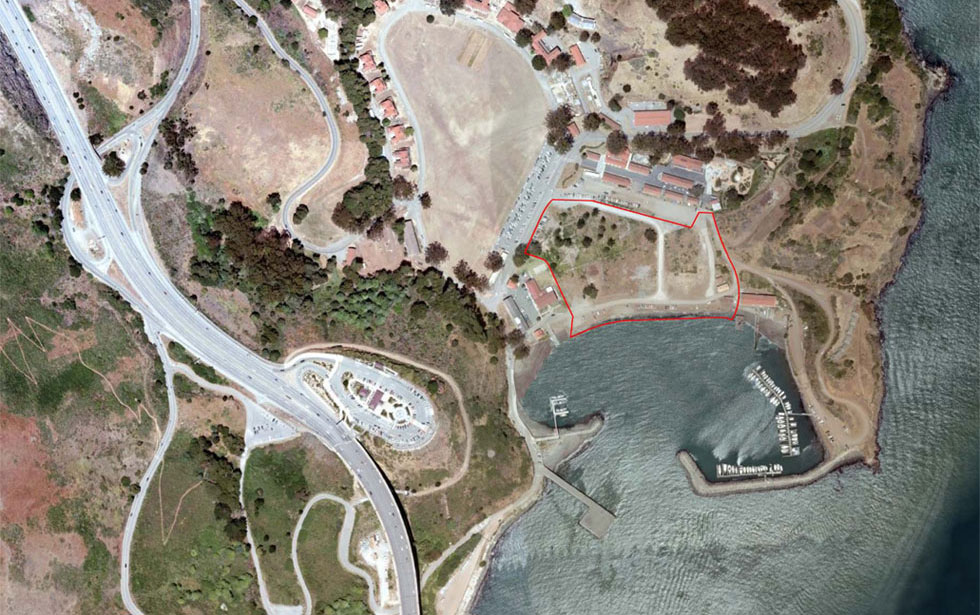
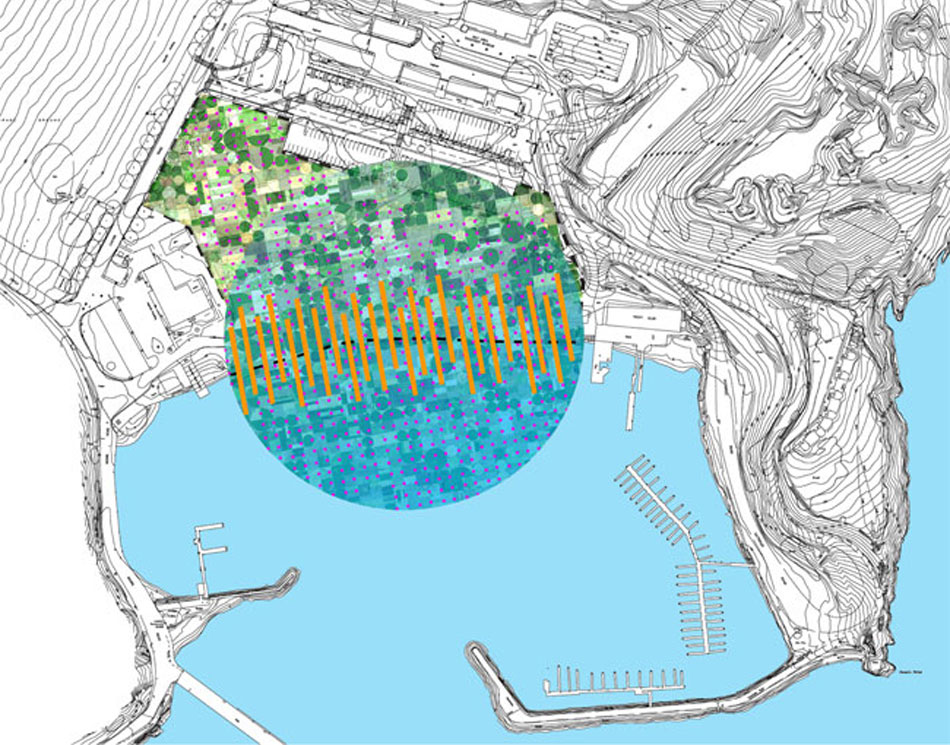
Creating Catalysts
The intent behind BRS 1 is to revitalize the ecosystem and restore it to a nutrient-rich shoreline. BRS 1’s surplus bio-production are then the seed materials to catalyze other BRS sites, transforming them into new viable sites of production. BRS 1: Horseshoe Cove, as an original infrastructure, will then recede, while proactive ecologies on this initial site are allowed to grow and flourish. The plot nurseries will be reclaimed by the rising sea level and a thriving marine estuary reestablished, all while Horseshoe Cove remains a center for study and learning—an eco-tourist destination—that is exemplary of the unfinished first node in an engineered network of ecological remediation sites across the larger San Francisco Bay.
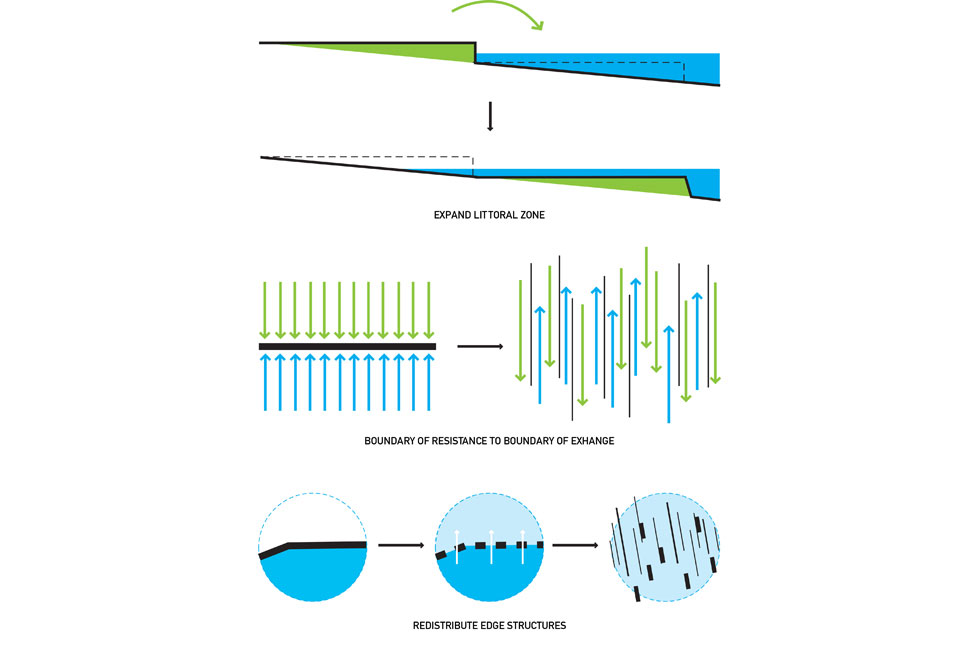
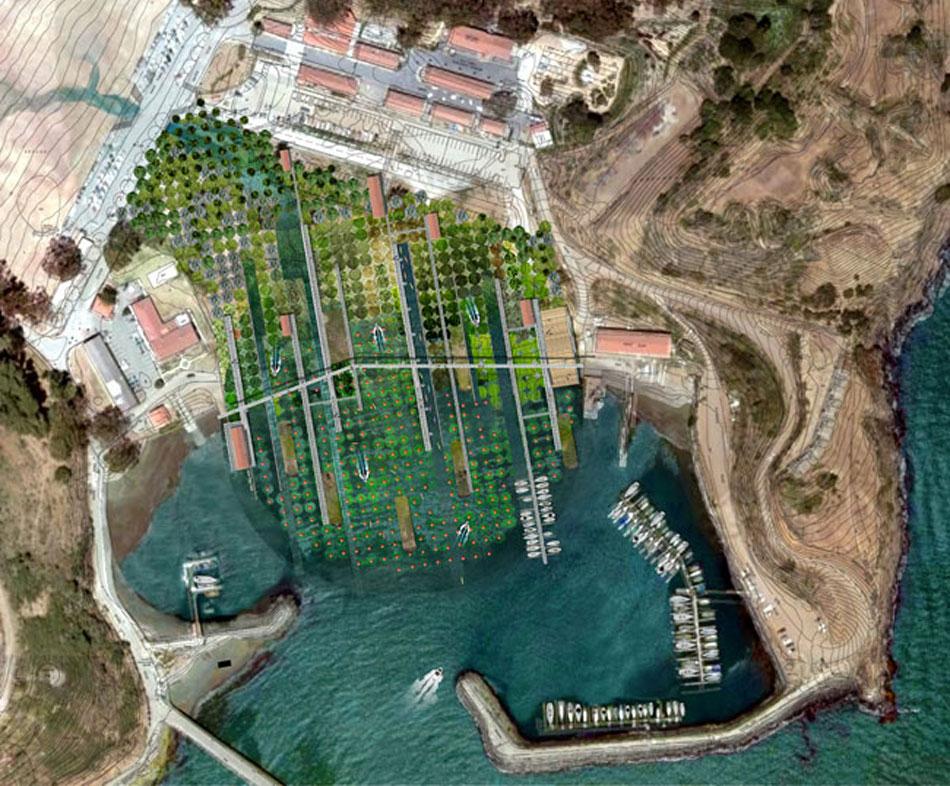
Public Works as Open Works
INTERSTICE believes that an ecological revitalization at this scale relies on community involvement and integrated educational programs, a relationship that connects public interest with the ecological mission of this constantly expanding and developing landscape. This participatory dynamic reframes the nature of public works as an open work, engaging beneficiaries, both economic and ecologic, through human propagation, care, and stewardship. BRS 1 is a site of exchange between multiple disciplines including marine biology, architecture, education, landscape, civil engineering, urban planning, and community leadership, all of which are leveraged to ensure creation of a successful and multi-valued landscape and architecture. The project reframes the idea of infrastructure—defined as typically hard, manmade, disruptive, and costly—as an amalgam of smaller scale soft networks harnessing the potential of naturally occurring systems. A new decentralized system emerges, transforming sites of ecological trauma by leveraging their untapped potential as a means for structured ecological remediation.
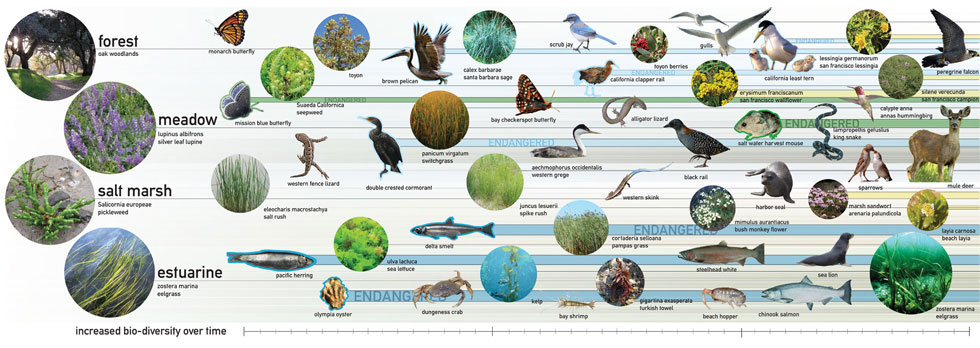
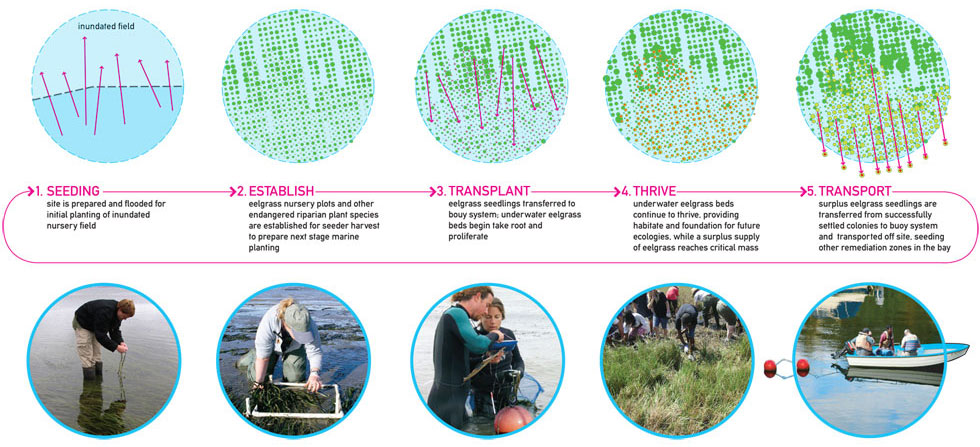
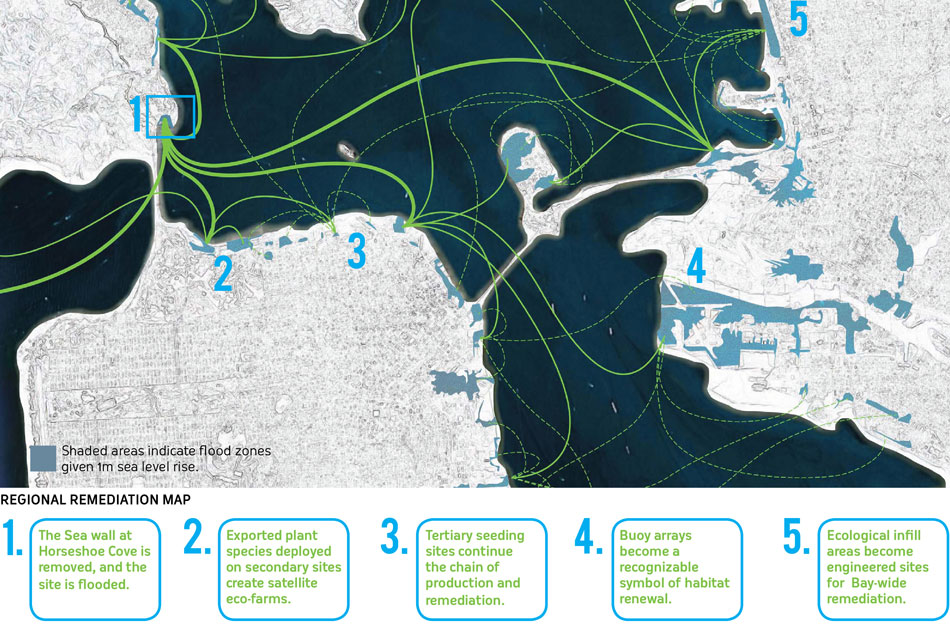
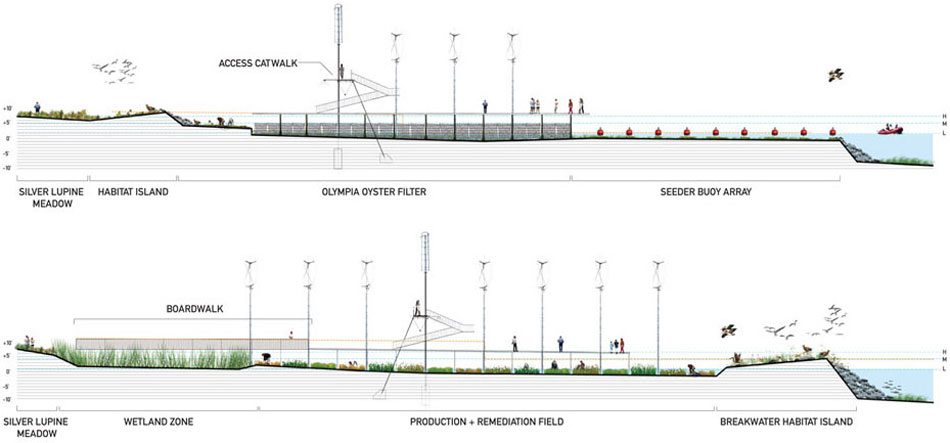
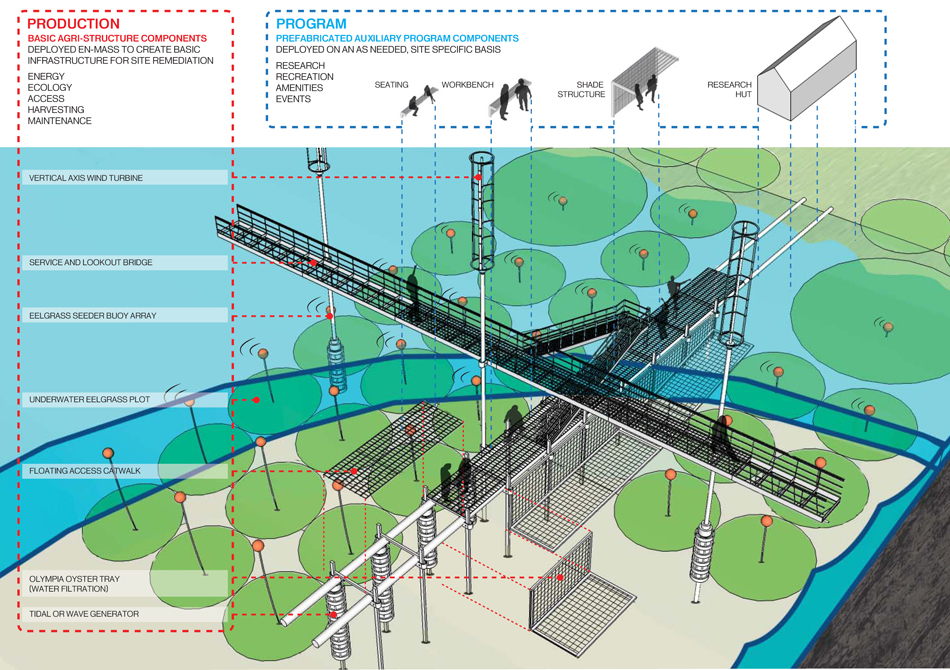



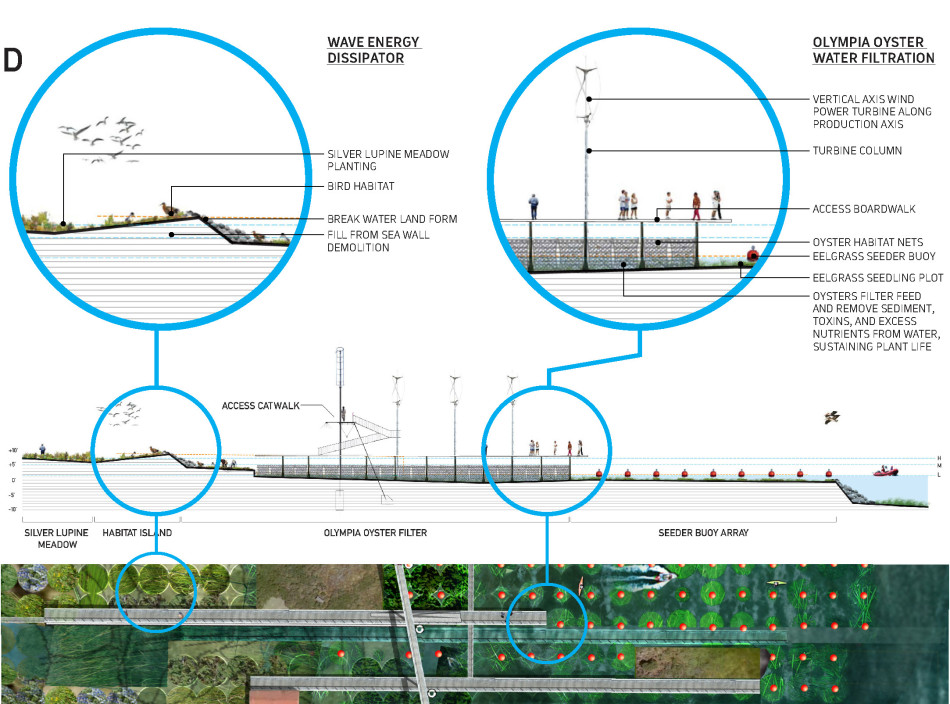
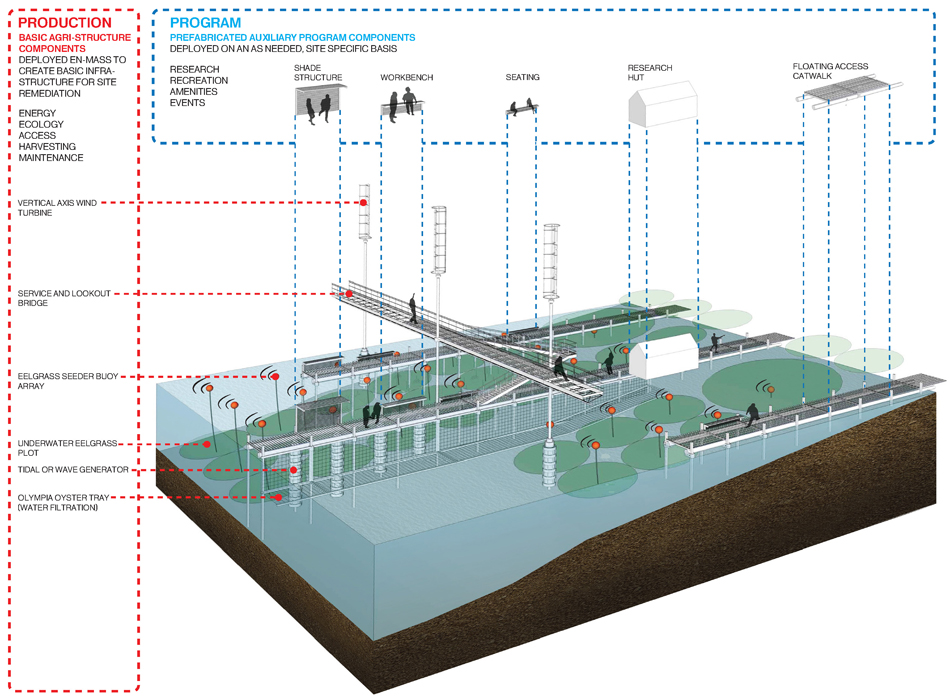
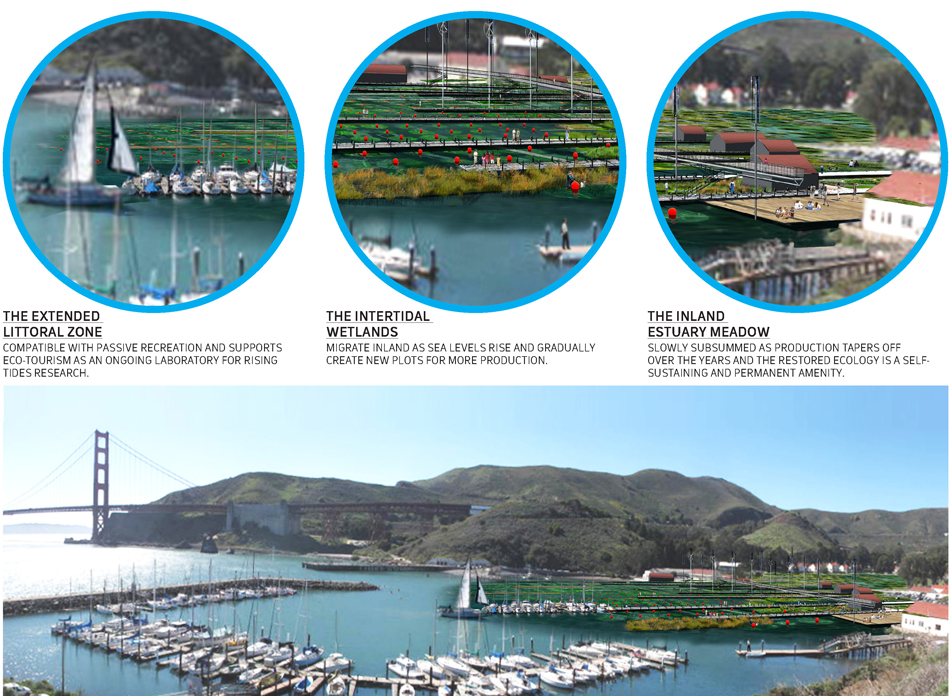
Location: Horsehoe Cove, Marin County, California
Owner/Client: N/A
Scope: Restoration Master Plan, Baywide Remediation Strategy Proposal
Status: Completed 2009
Photography: N/A
Award: Winner of 2012 AIASF Citation Award for Unbuilt Design
